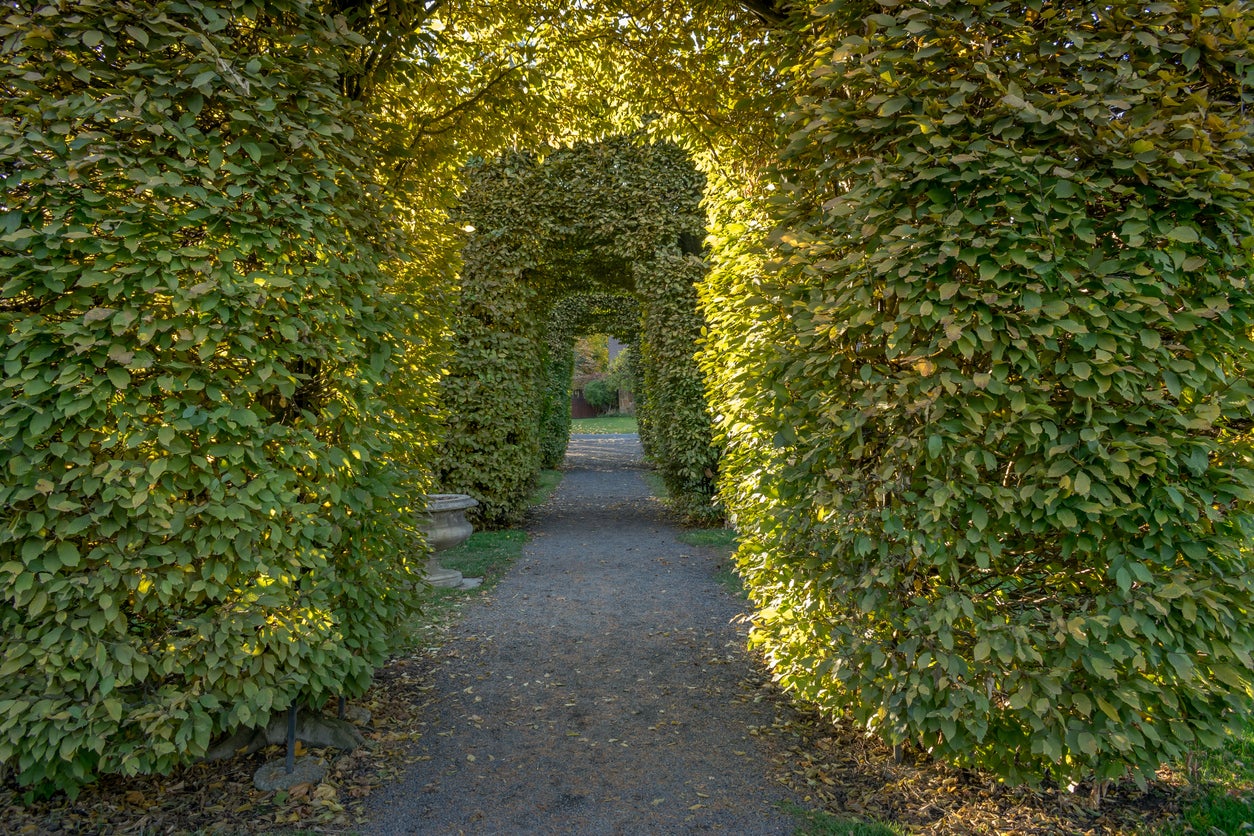Labyrinth Maze Gardens – Learn How To Make A Garden Maze For Fun


A backyard labyrinth garden, or even a maze, is not as outlandish as it sounds. A small-scale labyrinth can be a pretty way to decorate a garden space, and if you have more space, you can make a true puzzle: a maze to solve. Read on for some more garden maze and labyrinth ideas.
What is a Labyrinth Garden?
A labyrinth and a maze are not the same things, but either can be made in the garden with plants or other materials. For a labyrinth, you simply construct a continuous path that twists and turns until it reaches the center of a circle, square, or another shape.
As compared to a labyrinth, maze gardens are more of a puzzle. This will look similar but contain branching paths. There is just one true route to the center and several wrong turns and dead ends to trick participants.
A classic maze or labyrinth garden is made of hedges. These are usually tall enough that you can’t see the solution to the puzzle or the path ahead. In the Midwest in the fall, cutting a maze into cornfields is popular. These are somewhat on a larger scale for most gardeners to handle, but a good labyrinth or maze garden doesn’t have to be tall or expensive to construct.
How to Make a Garden Maze
The first step in making a garden maze or labyrinth is to design it. This is not the kind of garden you can make on the fly. Get out pen and paper, or a computer program, and draw your garden based on the dimensions in the space you have available. Then it’s just a matter of putting in plants or other garden materials according to your design.
Here are some garden maze and labyrinth ideas to help get you started in planning and designing:
- Patio labyrinth. Use pavers of two different colors to create a labyrinth and a patio in one.
- Pavers and turf. Another use for pavers is to lay out a maze or labyrinth within grassy turf. The grass becomes the path for the maze, while the pavers act as the edges. Alternatively, the pavers or flat rocks can be used as the pathway and the turn as the edges.
- Meadow maze. A simple way to create a maze is simply to mow it into a lawn. To get more height and maintain simplicity, let the grass around the maze grow into a meadow with tall grasses and pretty wildflowers.
- Hedge maze. This is the classic garden maze. Dense, slow-growing shrubs, like yews, are often used to create true mazes, but it costs a lot.
- Vine maze. To create a real maze with height, but without the expense of using all hedges, try climbing vines. You’ll need to construct the maze out of a climbing structure for the vines, like wire fencing. Hops, grapes, clematis, and honeysuckle are good choices.
- Ornamental grass labyrinth. A labyrinth laid out in a variety of ornamental grasses is pretty and requires little maintenance.
Sign up for the Gardening Know How newsletter today and receive a free copy of our e-book "How to Grow Delicious Tomatoes".

Mary Ellen Ellis has been gardening for over 20 years. With degrees in Chemistry and Biology, Mary Ellen's specialties are flowers, native plants, and herbs.